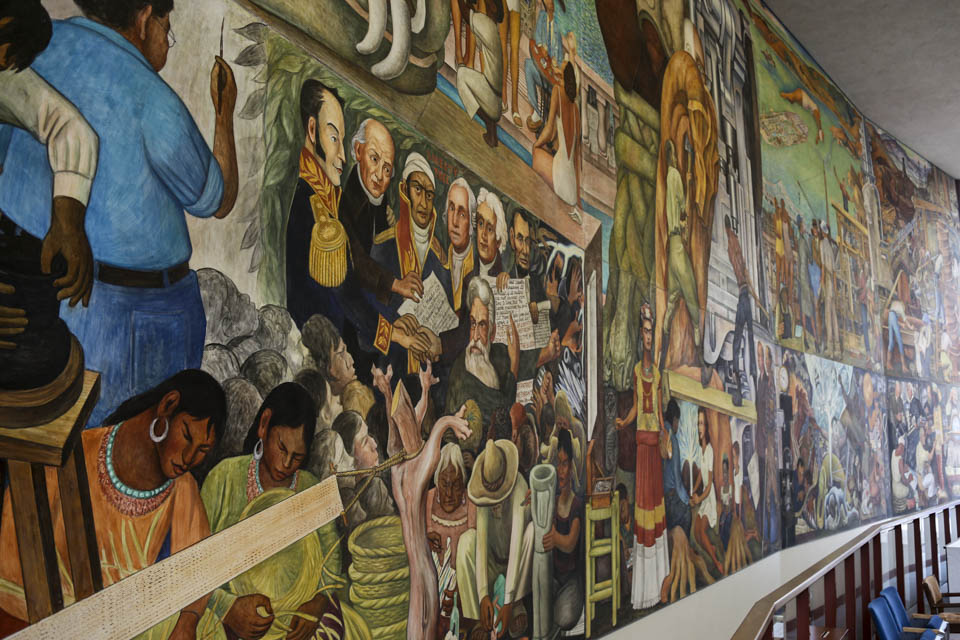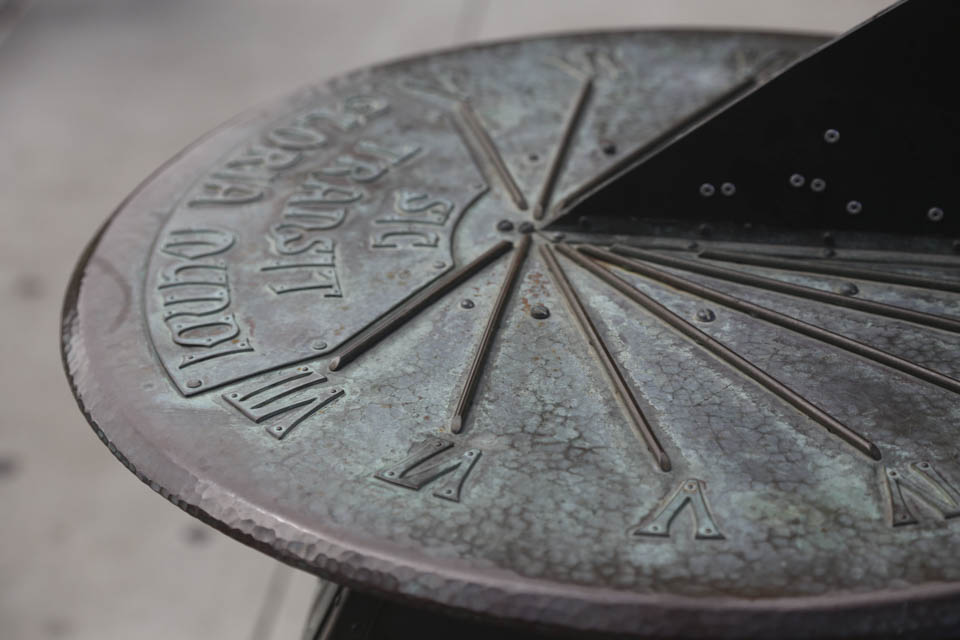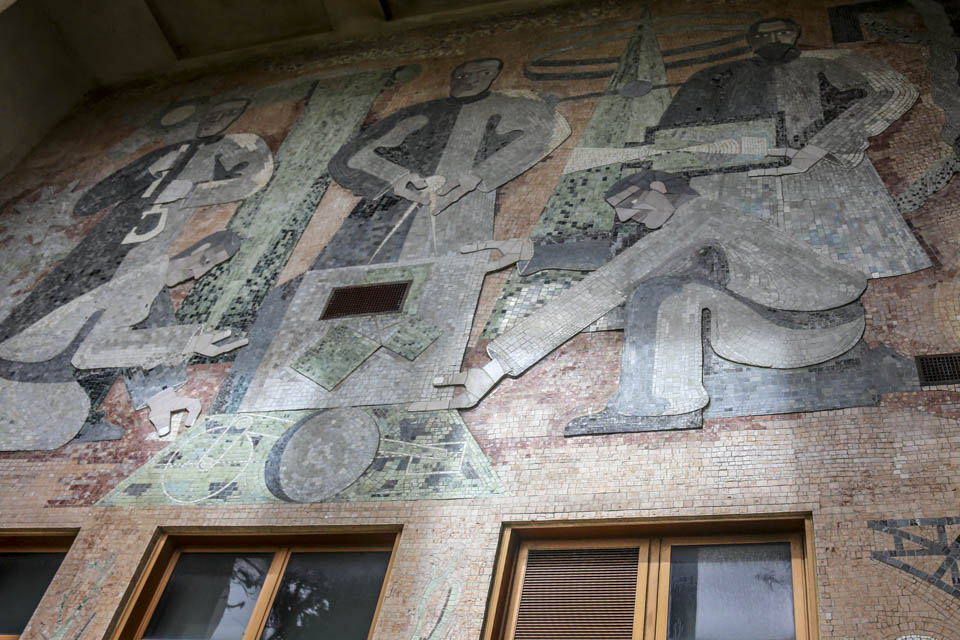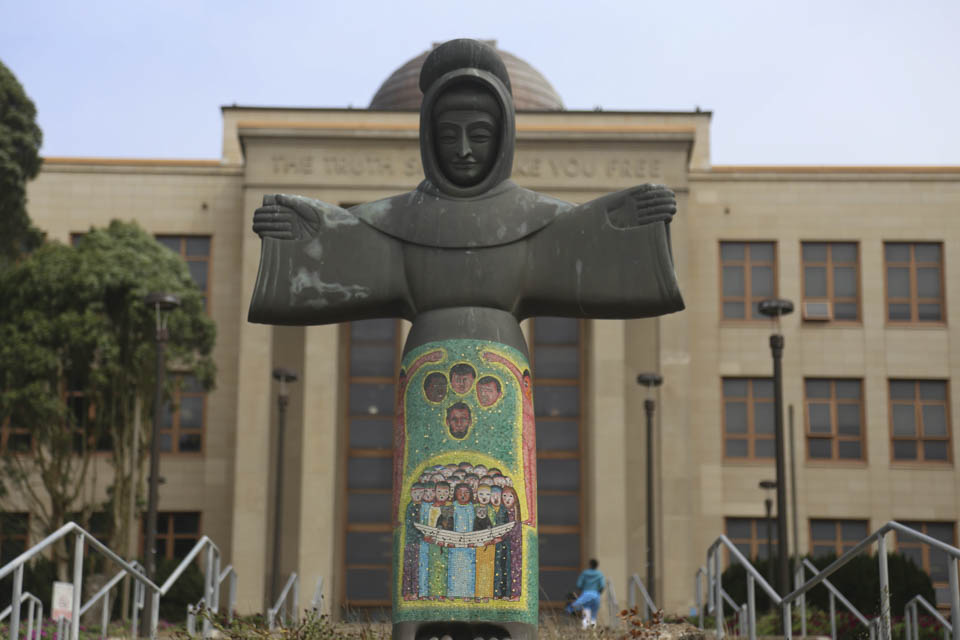Historic artworks are in plain sight


By Charlie Innis
The Guardsman
Students walk by historic artwork everyday on campus, but many may not realize it.
Over 23 pieces are scattered throughout Ocean Campus itself and more can be found dispersed among City College’s satellite centers.
City College’s archive of campus artwork holds over 90 folders of documents and a breadth of history lies within its content.
Julia Bergman, City College Works of Arts Committee chair and retired librarian, said many students are unaware of the campus art, yet she believes it’s important to include artwork somehow in college life.
“I think that for many students today, a visual image is more stimulating or more impactful than a book,” Bergman said.
Most of the artworks touch on topics relating to multiculturalism, innovations in science and social injustice. Some are homages to indigenous people of the Americas.
Bergman said Diego Rivera’s mural, “Marriage of the Artistic Expression of the North and of the South on this Continent” (better known as “Pan-American Unity”,) is often the focal point of City College’s artwork.
The mammoth 22-by-75-foot mural resides within the Diego Rivera Theatre, occupying an entire wall of space.
The mural spans five centuries of artistic and scientific evolution in the cultural landscape of America from early indigenous people to colonization to modernization.
But many other artworks may go unnoticed, although students pass them on a daily basis.
St. Francis of the Guns
St. Francis of the Guns stands in front of the Science Hall facing Phelan Avenue.
Italian-American sculptor Beniamino Bufano created the sculpture following the assassination of Martin Luther King Jr. and Sen. Robert F. Kennedy in 1968.
Following the slayings, the presiding mayor of San Francisco volunteered citizens to turn in handguns, which Bufano then converted into gunmetal for use in his sculpture.
Two thousand relinquished weapons went into the casting of St. Francis of the Guns.
A mosaic commemorating slain leaders is set into the statue’s base — the faces of Abraham Lincoln, Robert F. Kennedy, John F. Kennedy and Martin Luther King Jr. float above a choir of multiethnic children.
“Although the origins of this piece are kind of grim, it very much has this joyful aspect to it,” Bergman said.
Recent proposals have been made to relocate the statue to Alcatraz Island, she added, but such a move would diminish its prominence.
“Here, facing Phelan Avenue, everyone driving on Phelan can see it. All the passengers on the 43 Muni bus can see it,” Bergman said.
Like most of City College’s artwork, the statue is on permanent loan from the San Francisco Art Commission, so City College cannot object if the proposal is granted. However, Bergman said it will likely remain where it is.
Organic and Inorganic Science
Two marble mosaics titled “Organic and Inorganic Science” inhabit the entire north and south exteriors of the Science Hall.
Initially completed by Herman Volz in 1968 and restored in 2005, these mosaics depict large figures engaged in scientific domains such as physics, chemistry, biology and mathematics.
Images of micrometers, compasses, engines, grasshoppers, bats and beavers make up the mosaics details, intended to convey the different elements of organic and inorganic science.
Bergman said their inception is largely in debt to architect Timothy Pfluegar, who designed City College’s Science Hall and regularly employed a team of artists in his projects.
“Because these two pieces are mosaic, it took three years to install these piece by piece by piece,” Bergman said. “It was a labor of love.”
Sundial
This copper sundial rests on a pedestal on the south side of Cloud Hall Plaza, facing the stairs leading to Ram Plaza and Conlan Hall.
August Tiesselinck, a copper and silver smith who designed in the arts and crafts style of the early 20th-century, constructed the sundial in 1972.
His wife and former member of the nursing department at City College donated the piece to Ocean Campus.
The sundial was damaged for an unknown period of time until 2011, when student Morgan Wilson noticed something peculiar about it.
“A student walked up and down those stairs everyday, looked at the sundial, and saw that the gnomon was broken, that’s the piece that points as the sun rotates around,” Bergman said.
Wilson contacted the Work of Arts Committee and began arranging for its repair, a task he would undertake himself.
Wilson completed the sundial’s renovation in December 2013.



Comments are closed.